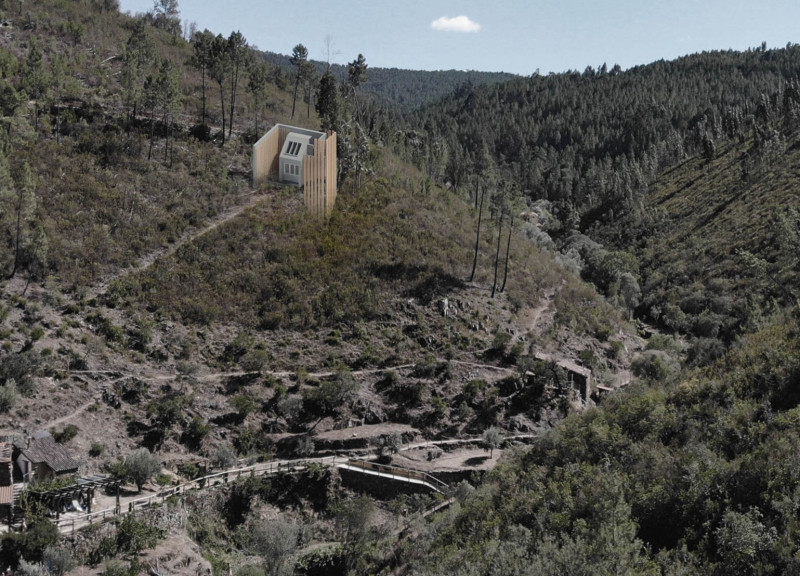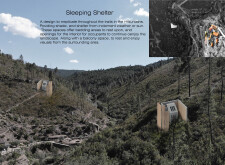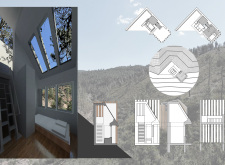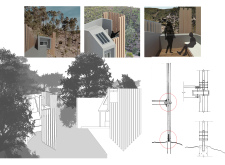5 key facts about this project
The "Sleeping Shelter" project is located along mountain trails, providing places for outdoor enthusiasts to rest. The design focuses on creating shelters that protect users from different weather conditions while allowing them to connect with the surrounding landscape. This concept emphasizes the ability to replicate these shelters in various locations, ensuring each one serves both practical needs and enhances the outdoor experience.
Design Intent
Each shelter is made to offer shade and shelter from rain and sun, meeting the vital needs of those who are active in nature. Designated bedding areas encourage users to rest comfortably while enjoying their natural surroundings. Openings in the shelters allow occupants to experience the beauty of the landscape, bringing the outside in and creating a more inviting atmosphere.
Spatial Configuration
A key feature of the design is the balcony space, which provides an elevated area for users to relax and enjoy the views. This design element creates a transition between indoor and outdoor areas, enhancing the experience by encouraging interaction with the environment. The layout not only allows for relaxation but also promotes a mindful connection to nature.
Iterative Design Process
The development of the Sleeping Shelter involves an iterative design process that considers how each structure interacts with the slopes where they are placed. This careful consideration of the topography informs decisions about orientation and positioning. Questions around how space engages with the landscape play a significant role in shaping the final design.
Potential Materials
While specific materials are not detailed, the design suggests a focus on sustainable choices that would fit well within outdoor settings. The intention to blend the shelters with their natural surroundings points to careful thought around material selection, prioritizing durability and environmental harmony.
A notable detail is the balcony area, which offers extensive views of the mountainous landscape, encouraging users to step outside, breathe deeply, and take in the scenery.






















































